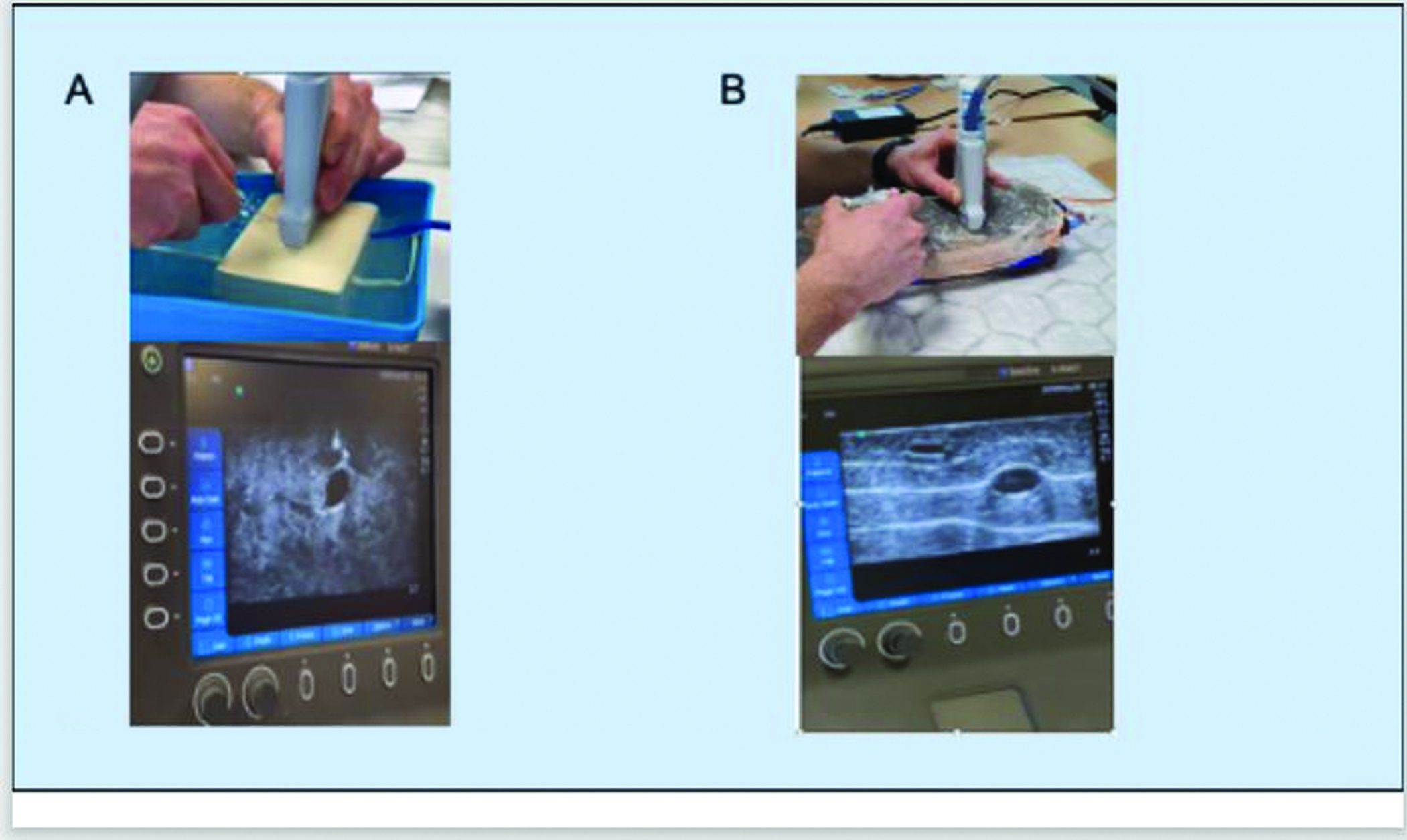
Repeated attempts at peripheral intravenous (PIV) access cause increased discomfort and delays in treatment for patients in hospital. The use of ultrasound can improve success in PIV access, benefitting patient experience. Medical professionals are increasingly expected to use ultrasound when landmark techniques fail [1]. We sought to improve confidence using ultrasound for PIV cannulation with low-cost simulation models made from ADAMgel [2] or tofu in multiple teaching sessions.
We organized teaching sessions with multiple specialties at St Richard’s Hospital. A total of 48 members of staff have been taught over four sessions. Prior to the teaching session learners were asked to complete a survey identifying previous ultrasound experience and rating confidence using ultrasound for PIV access. The teaching session consisted of an introductory multimedia presentation with a video demonstration, then practical experience. Models consisted of water-filled balloons placed in ADAMgel (Aqueous Dietary Fibre Antifreeze Mix gel) or tofu to simulate human tissue and veins, Figure 1-A52. Red dye added to the water in the balloons produced ‘flashback’ in the intravenous cannula. Modification of difficulty was achieved by changing the balloon depth. We then conducted questionnaires immediately after the sessions for feedback.


The initial survey identified only 29% of staff had previously used ultrasound for PIV access, and half of these (15% overall) had only used it once or twice a year. Using a five-point Likert scale, 74% of respondents rated their confidence in using ultrasound as one or two out of five. All respondents thought they would benefit from further teaching in PIV access. Feedback after teaching sessions was favourable, with 95% of respondents finding the session very useful and 95% also believing it would increase their use of ultrasound in clinical practice. After the session, more than half rated their confidence in ultrasound cannulation as four or five out of five.
We have demonstrated that there is a desire from medical staff to increase their competency in ultrasound-guided PIV cannulation. Using low-cost, high-fidelity simulation models with a blended learning method, we can deliver teaching sessions to a large number of medical staff. We hope to continue this teaching in collaboration with our sister sites throughout Sussex to increase confidence with ultrasound-guided PIV cannulation in this region.
Authors confirm that all relevant ethical standards for research conduct and dissemination have been met. The submitting author confirms that relevant ethical approval was granted, if applicable.
1. Bodenham Chair A, Babu S, Bennett J, et al. (2016) Association of Anaesthetists of Great Britain and Ireland: Safe vascular access 2016. Anaesthesia 71(5): 573–585. DOI: 10.1111/anae.13360.
2. Willers J, Colucci G, Roberts A, et al. (2015) 0031 Adamgel: An economical, easily prepared, versatile, selfrepairing and recyclable tissue analogue for procedural simulation training. In: Prize poster presentations, 2 November 2015, p. A27.2-A27. The Association for Simulated Practice in Healthcare. DOI: 10.1136/bmjstel-2015-000075.66.